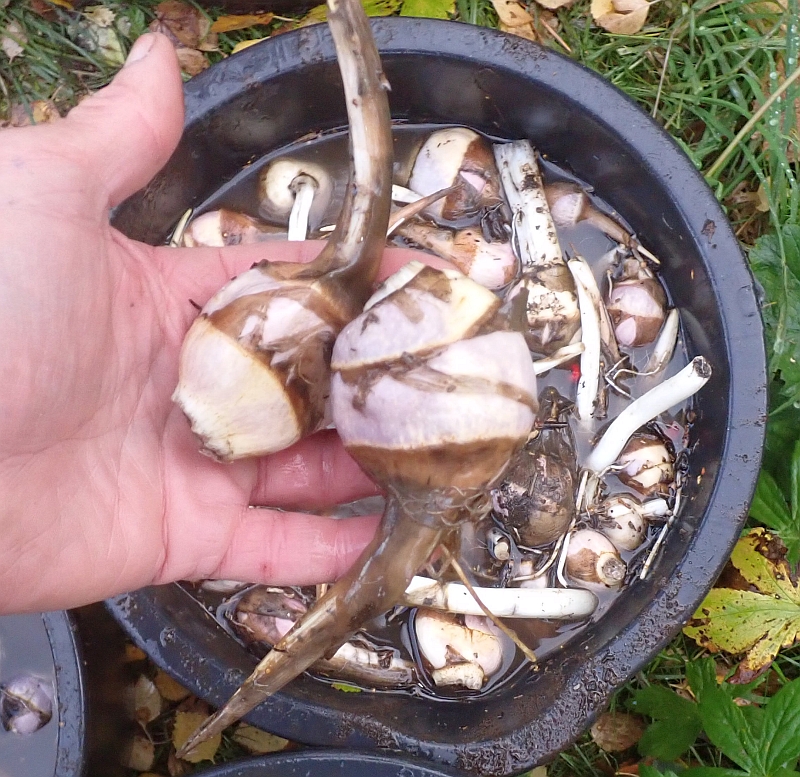
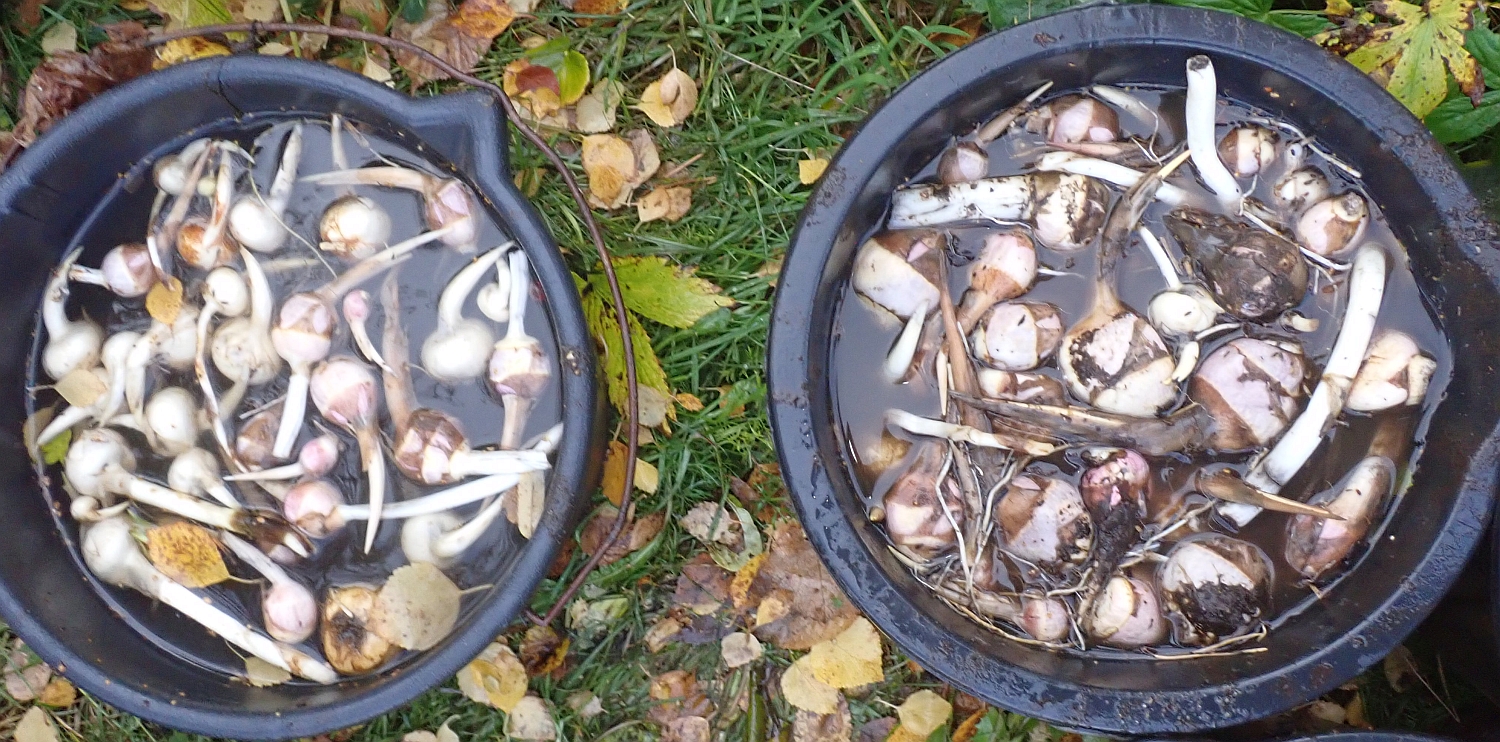


As I mentioned in my post about harvesting wapato in my garden a couple of days ago, I attended the Midwest Wild Harvest Festival in Wisconsin in September 2019 to do the keynote and a couple of talks and was lucky enough to be able to attend Sam Thayer’s Wetland Plant Hike along the Mississippi during which the highlight was the demonstration of wapato harvest. There had been record flooding that spring on the Mississipi and water levels were still high which meant that the places where Sam normally harvested were too deep. However, he did find a small patch to demonstrate harvesting techniques. As Sam mentions, this is how Canada geese do it! Did I mention that I rate Sam’s 3 books above all other books on wild edibles! His book The Forager’s Harvest has 16 pages on wapato! See the videos and pictures below:

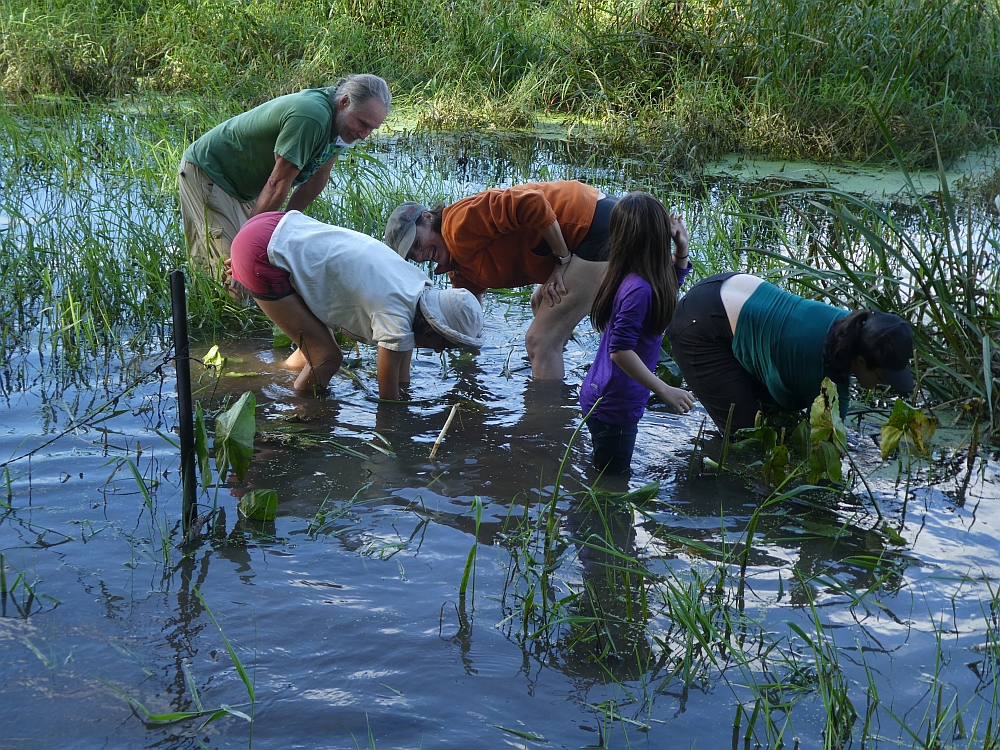


When I attended the Midwest Wild Harvest Festival in Wisconsin in September 2019, I was lucky to be able to attend Sam Thayer’s Wetland Plant Hike along the Mississippi during which the highlight was the demonstration of wapato harvest. Look out for the video I took that day in a post in the next few days. Earlier this week found me harvesting my own wapato, grown in large tubs in the garden….an altogether more invigorating experience, the gardener’s equivalent to winter fjord bathing, as the water temperature was only about 1C (and the following day the water was frozen); I had planned to try locating the tubers by feet the next day, but (fortunately) the thick ice made that difficult (OK, I’m a wimp as I could have broken through the ice with a pick axe ;))
I’m growing both North American wapato (Sagittaria latifolia; picture) and Chinese arrowhead tubers (Sagittaria trifolia) which were originally shop bought. 

My house was given the name Bergstua by the previous owners, literally meaning house on the rock, a rocky hillside overlooking the fjord. Not a natural place for a pond. I wanted to have a pond somewhere, initially mainly for wildlife, habitat for frogs, drinking water for birds etc.
I eventually chose a small depression in the rock where the previous owners had presumably blasted a hole in order to erect a flagpole. Not being one for flags, I decided to convert this area into a pond and this involved removing both the metal support and concrete base and this took a couple of years of hard work as I also wanted to avoid machines. If it was feasible by hand I would do it by hand, even resisting an electric drill for many years. I used to come home from work and spent half an hour every day hacking at the concrete with a metal digging bar and when that was eventually removed deepening the depression in the shale-like rock (phyllite).
The hedge you can see behind the pond was Cotoneaster lucidus which has non-edible berries that not even birds take until they are desperate. We bought a rubber liner for the pond in the UK on one of our trips to visit family. I initially filled the pond and the boggy marginal areas with wild plants and creatures like water boatmen and frog spawn from lakes in the area, but regretted a few of the introductions like Equisetum fluviatile (swamp horsetail). The frogs never really thrived but a few survived for a few years and one took up residence in our septic tank…
I later gradually converted the pond to an edible pond and the hedge behind was dug out and replaced by a diverse edible/bird friendly hedge including Morus alba, Crataegus, Viburnum edule, Sambucus nigra “Variegata”, Viburnum opulus, Amelanchier “Thiessen”, Rosa spp., Staphylea (bladder nut) and a few others. About 10 years ago, I overhauled the pond, digging out all the soil and replanting from scratch in order to remove all the horsetail and other aggressive plants. Below is a video of my little collection of water and bog plants this week and below the video is list of plants we see:
Featuring the following plants:
Gunnera tinctoria (G. chilensis) is one of the 80 in my book Around the World in 80 plants (ATW80)
Althaea officinalis (Marsh mallow/ legestokkrose)
Allium validum (Swamp onion, Pacific onion) which is also included in ATW80
Caltha leptosepala (Western marsh marigold, White marsh marigold / hvit soleihov)
Darmera peltata (Umbrella plant, indian rhubarb / skjoldsildre)
Lilium canadense ssp michiganense (Canada lily, Michigan lily / Canadalilje)
Saxifraga pensylvanica (Swamp saxifrage) is also in ATW80
Typha angustifolia (Reedmace, bulrush, cattails / smal dunkjevle)
Filipendula ulmaria “Variegata” (Meadowsweet / mjødurt)
Polygonum hydropiper (Water pepper / vasspepper)
Eupatorium cannabinum (Hemp agrimony / hjortetrøst) (for insects and butterflies)
Zizania latifolia (Manchurian wild rice) – not very useful as it’s the swollen stems infected by a fungus which is used.
Lycopus spp.
Apium nodiflorum (Fool’s watercress, European marshwort)
Oenanthe javanica (Water dropwort, seri)
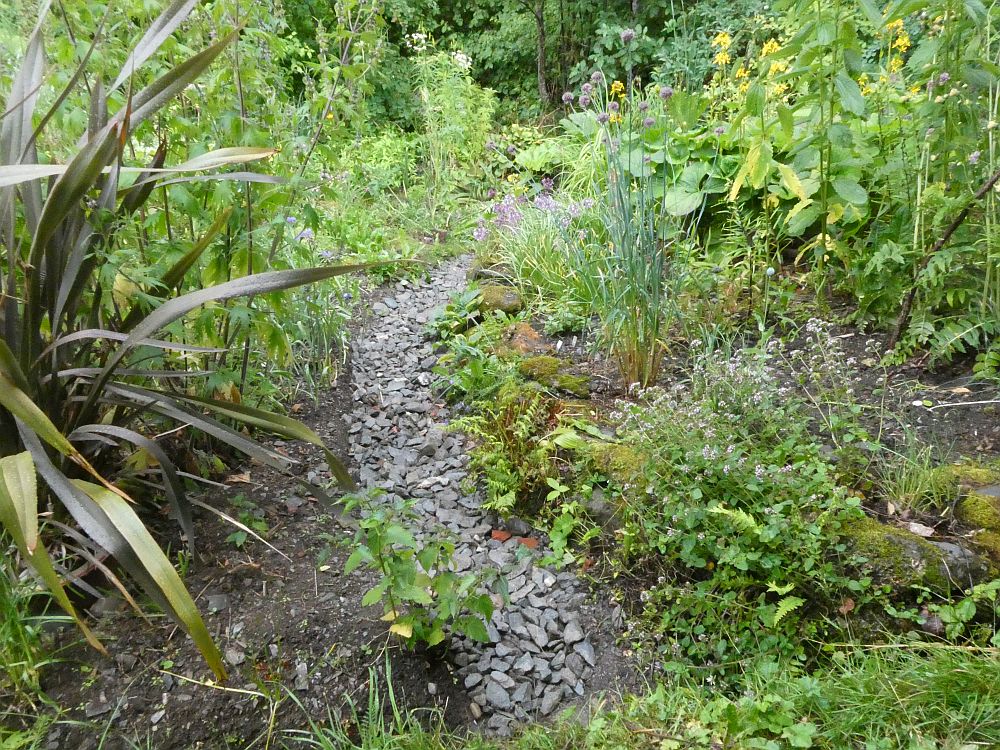

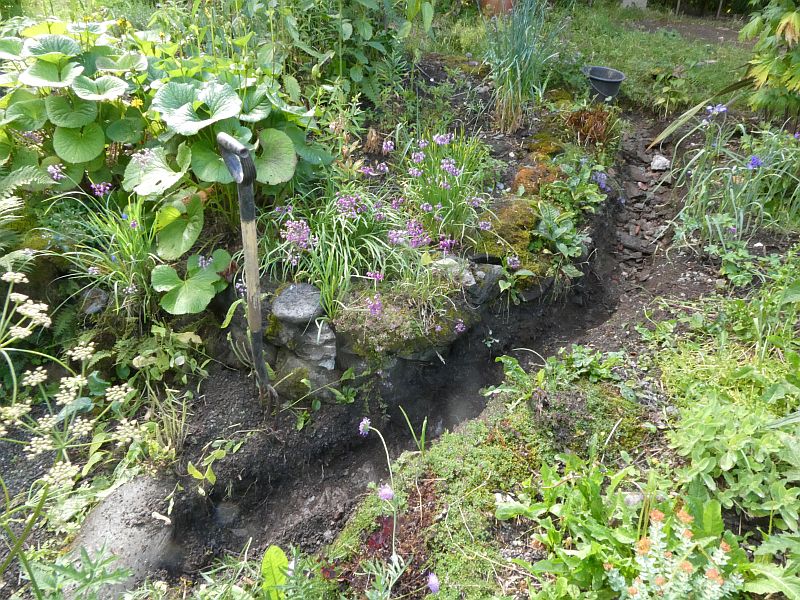


He was also instrumental in suggesting that the Ecoaldeia de Janas should invite me to give a course! Added to that, he did almost all the driving on my trip. I also spent two nights at his house on the hills in Calhandriz above Alverca near Lisbon and was able to see his edible water gardens for the first time! So here are a few pictures of the garden, sadly neglected as Jorge wasn’t living here for some time! He has a large water tank under an outhouse to supply the water for this project! The pond is an oasis for wildlife in the dry countryside which has been suffering from drought for several years! Many thanks, Jorge!
Other edible water plants in the pond: Bacopa, Acorus, Oenanthe, Houttuynia, Aponogeton and watercress. Elsewhere in the garden, Jorge has planted apples, pears, orange, plums,fig and edible bamboos! A great little garden!